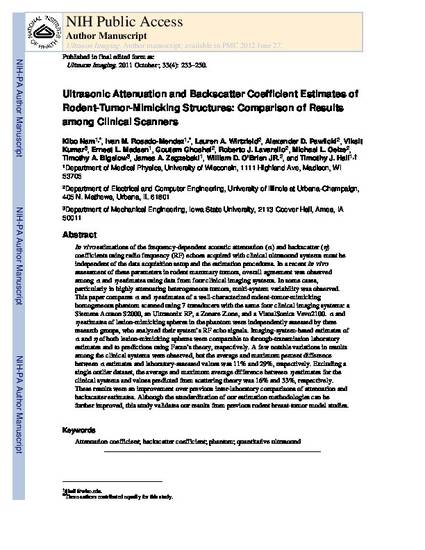
In vivo estimations of the frequency-dependent acoustic attenuation (α) and backscatter (η) coefficients using radiofrequency (rf) echoes acquired with clinical ultrasound systems must be independent of the data acquisition setup and the estimation procedures. In a recent in vivo assessment of these parameters in rodent mammary tumors, overall agreement was observed among α and η estimates using data from four clinical imaging systems. In some cases, particularly in highly-attenuating heterogeneous tumors, multisystem variability was observed. This paper compares α and η estimates of a well-characterized rodent-tumor-mimicking homogeneous phantom scanned using seven transducers with the same four clinical imaging systems: a Siemens Acuson S2000, an Ultrasonix RP, a Zonare Z.one and a VisualSonics Vevo2100. α and η estimates of lesion-mimicking spheres in the phantom were independently assessed by three research groups, who analyzed their system's rf echo signals. Imaging-system-based estimates of α and η of both lesion-mimicking spheres were comparable to through-transmission laboratory estimates and to predictions using Faran's theory, respectively. A few notable variations in results among the clinical systems were observed but the average and maximum percent difference between α estimates and laboratory-assessed values was 11% and 29%, respectively. Excluding a single outlier dataset, the average and maximum average difference between η estimates for the clinical systems and values predicted from scattering theory was 16% and 33%, respectively. These results were an improvement over previous interlaboratory comparisons of attenuation and backscatter estimates. Although the standardization of our estimation methodologies can be further improved, this study validates our results from previous rodent breast-tumor model studies.
Available at: http://works.bepress.com/timothy_bigelow/8/

This is an accepted author's manuscript of an article from Ultrasonic Imaging 33 (2011): 233–250, doi:10.1177/016173461103300403. Posted with permission.